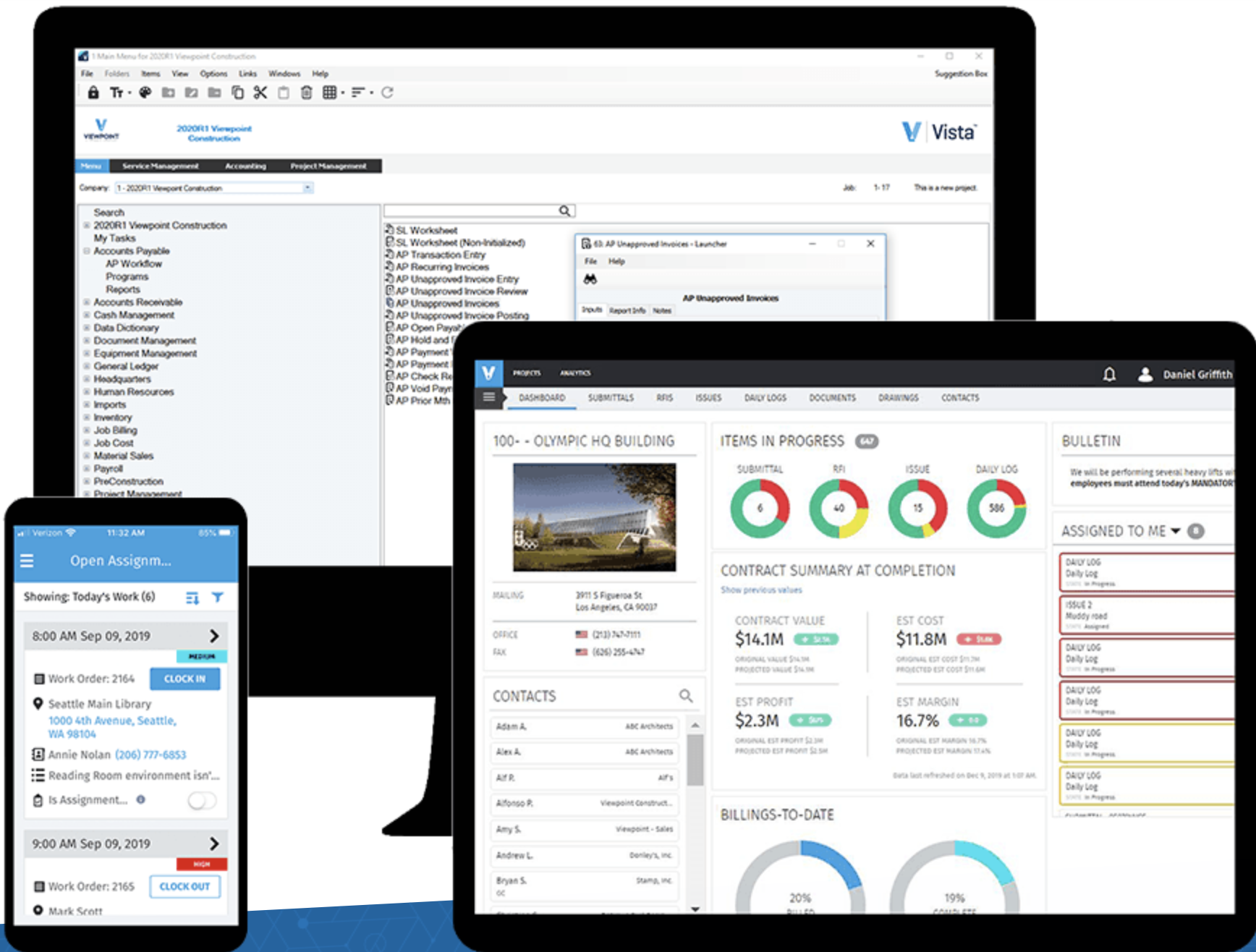2 Minute Read
January 25, 2024
0%
When you think of digital software, you probably imagine a desk-bound guy or gal in the IT department who helps when you’re finally forced to update your computer. You might not necessarily think of HVAC installers, HR, field service managers, or plumbers using construction technology.

But software technology has the potential to impact many, many parts of the construction business. The impact of technology goes far beyond the IT department.
Construction technology helps these construction areas:
Read on to see how construction tech affects and accelerates 11 different parts of the construction project team.

Owners, who manage large capital budgets, need targeted visibility into the contractor-led processes. To ensure the overall health of the company, owners and executives need fast and accurate information. But perhaps the most important issue is that the information is presented in the terms and format that they actually care about.
For example, a president or CEO of your company probably wouldn’t care that there were an unusually high number of account privilege upgrade requests in the server logs… but they would care that they were at a high risk of losing customers because of a cyber attack on their servers.
Construction software can take the same information, and present it with different metrics and in different formats, such as dashboards, based on what matters to the person looking.
Construction accounting software makes life easier in many ways:
Basically, construction tech keeps data accurate and consistent, so financial estimates and budgets are accurate (and stay that way throughout the project!).
Your job is to support a diverse, thriving workforce, make sure their HR needs are met, and make sure everyone is paid properly and on time. It’s also your job to onboard and retain qualified employees and contractors (including younger workers), keep everyone happy, and avoid compliance risk across multiple job sites, cities and states.
...it’s a big job.
Going from pen and paper to digital has a massive impact on HR and payroll jobs. Construction technology helps with things like:
Construction software eases the administrative burden on HR and payroll with automation and centralized information.
Construction technology makes it easier to do the right thing:
With modern construction software, the IT department goes from being a cost center to a business driver.
Bid too low, and you lose money. Bid too high, and you lose the job.
The pressure is on to accurately estimate all project materials, equipment, labor costs and quantities. The answer is accurate true costs, so your bids win work, and you don’t get sucked into profit fade.
Construction software technology improves standardization and accuracy. Look for new developments in processes and automation:
Estimators walk a fine line, but advances in construction technology offer real time, data-based insights—give a major boost to your best guess.
There are so many moving parts to each project that it’s almost impossible to be a good project manager without good construction project management tech tools.
It all comes together on the jobsite, and it can all fall apart. You have a constant need for accurate, up-to-date information to keep the hammers swinging. Oh ... and mobile would be nice.
Mobile access is a must from any construction software, if you’re out working in the field. New construction technology advances are bringing powerful capabilities, like creating field tickets on the spot, instead of taking days or months.
Look for other advances around customization and automation, too:
One of the biggest challenges in construction field management is all the time spent tracking down information. Mobile field technology and ready access to information can significantly reduce project costs.
Look for new ways to:
There’s a direct correlation between speed of billing and speed of payment, and new tech tools are closing the gap.
The cost of fleet equipment impacts your company’s bottom line. Between preventative maintenance, managing assets, and tracking depreciation, you need to be a machine to care for the machines!
The way equipment is managed makes the difference between costing or saving money.
Protect your equipment investment with proper maintenance and billing. Charge assets to jobs accurately using a mobile device.
New advances in construction software, like Trimble Construction One, bring all that information together in one place. This helps you:
To be fair, pen and paper still work.
It is technically possible to manually create designs from generic architectural models, to enter data manually, track project financials by hand, and to track payments to contractors and vendors by hand.
But it does not make financial sense to do so.
To be successful in the modern world, every job function in a construction company needs access to information and processes that are relevant to them.
Companies that already use technology have a competitive advantage in their ability to move faster, stick to an accurate budget, and get a high-level, strategic view of the profitability of their business.
2 Minute Read
January 25, 2024
7 Minute Read
October 14, 2021
4 Minute Read
August 3, 2021